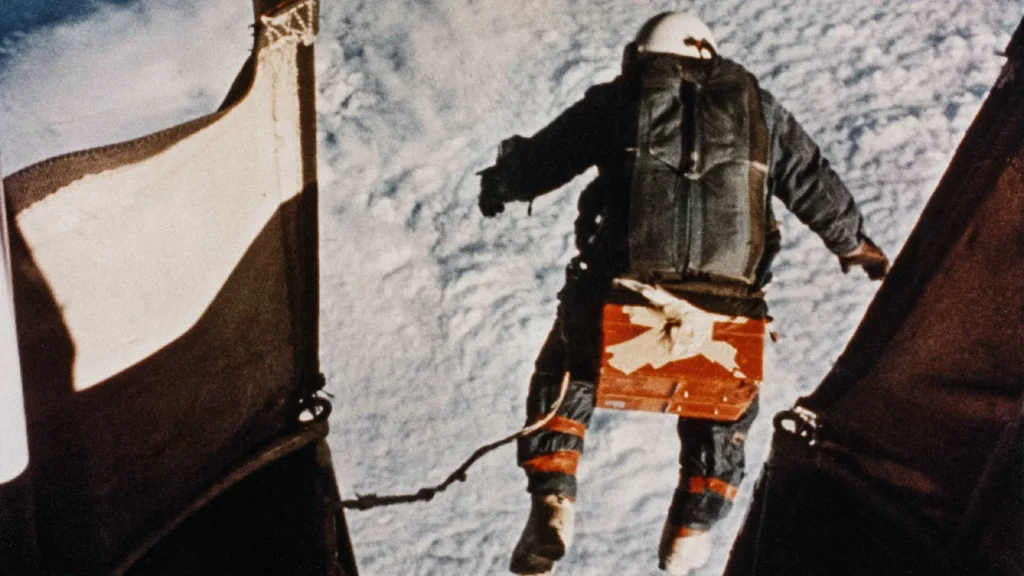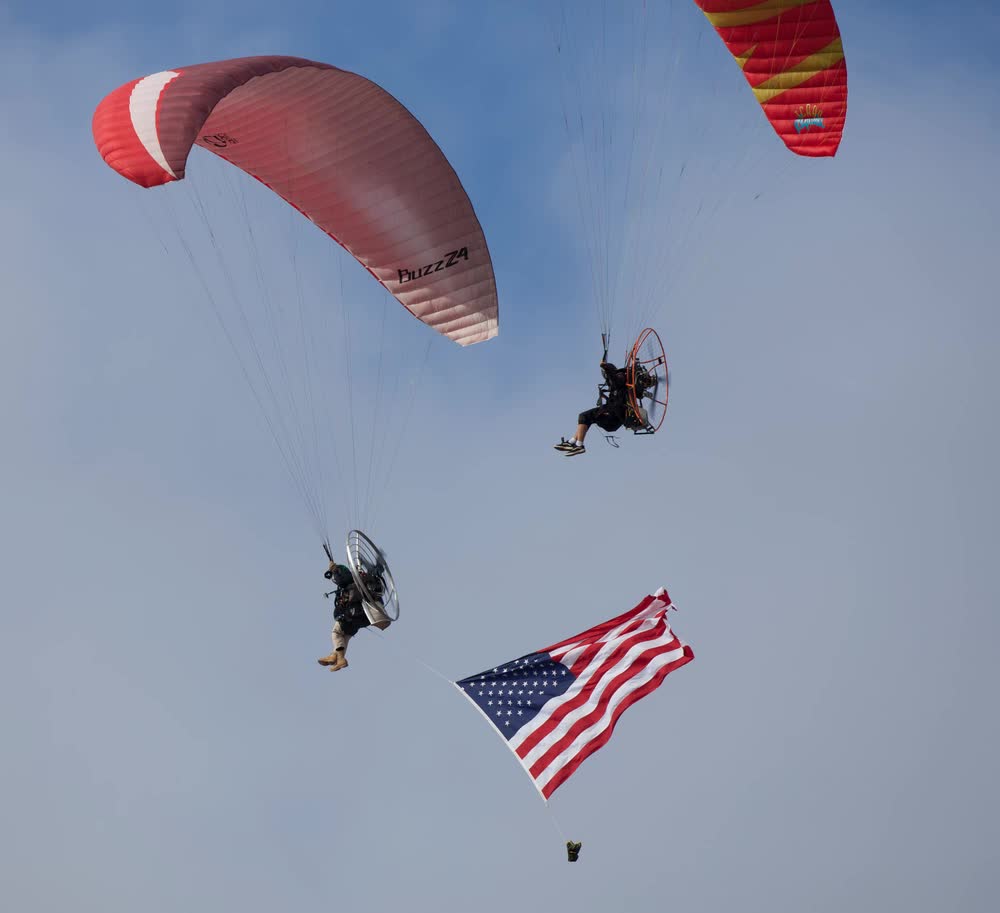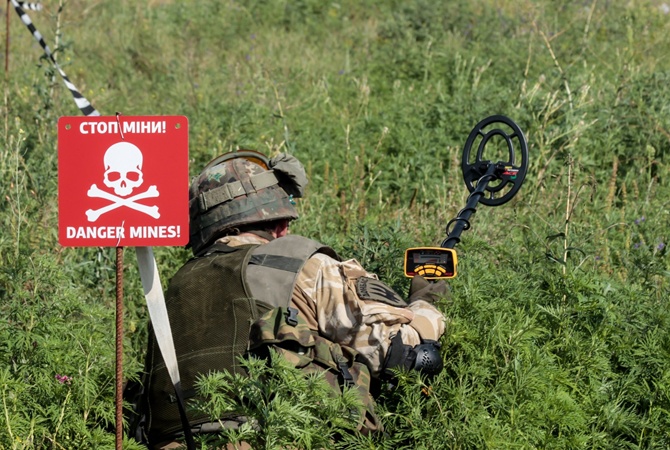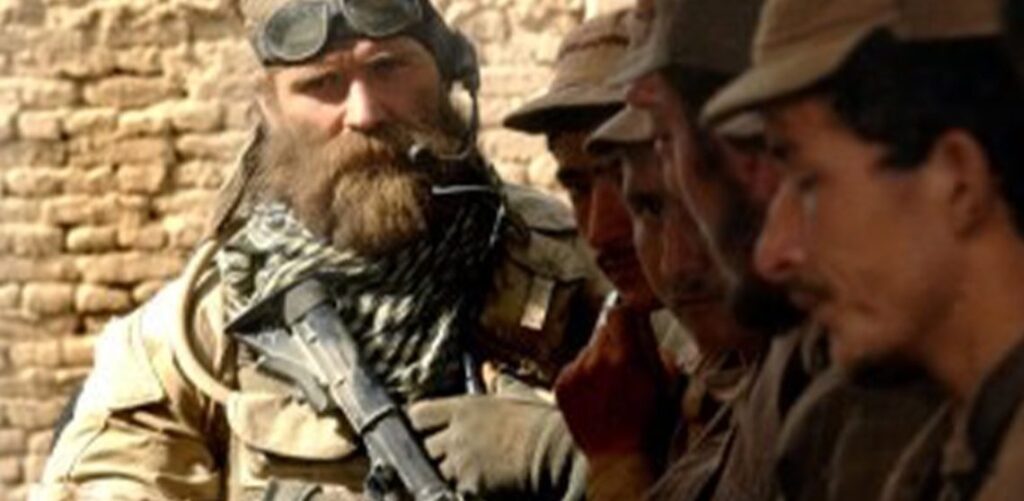This article by Matt Fratus was originally published by Coffee or Die.
On August 16, 1960, United States Air Force Captain Joseph Kittinger ascended above New Mexico in an open gondola suspended from a helium balloon. The 32-year-old test pilot wore a pressurized suit because, without it, the extreme altitude would’ve caused his body fluids to boil. When he was 19 miles above the earth, Kittinger jumped and entered an uncontrolled descent, falling at speeds exceeding 600 mph. The free fall lasted 4 minutes and 36 seconds until, at 14,000 feet, Kittinger pulled the ripcord of his parachute.
Kittinger broke two world records that day: the highest-ever parachute jump and the longest free fall. Two weeks later, an image of Kittinger falling through a sea of white clouds appeared on the front page of Life magazine. But few details of the record-setting jump were made public because it wasn’t a daredevil stunt. In fact, it was performed for the sake of solving a real-world military problem.
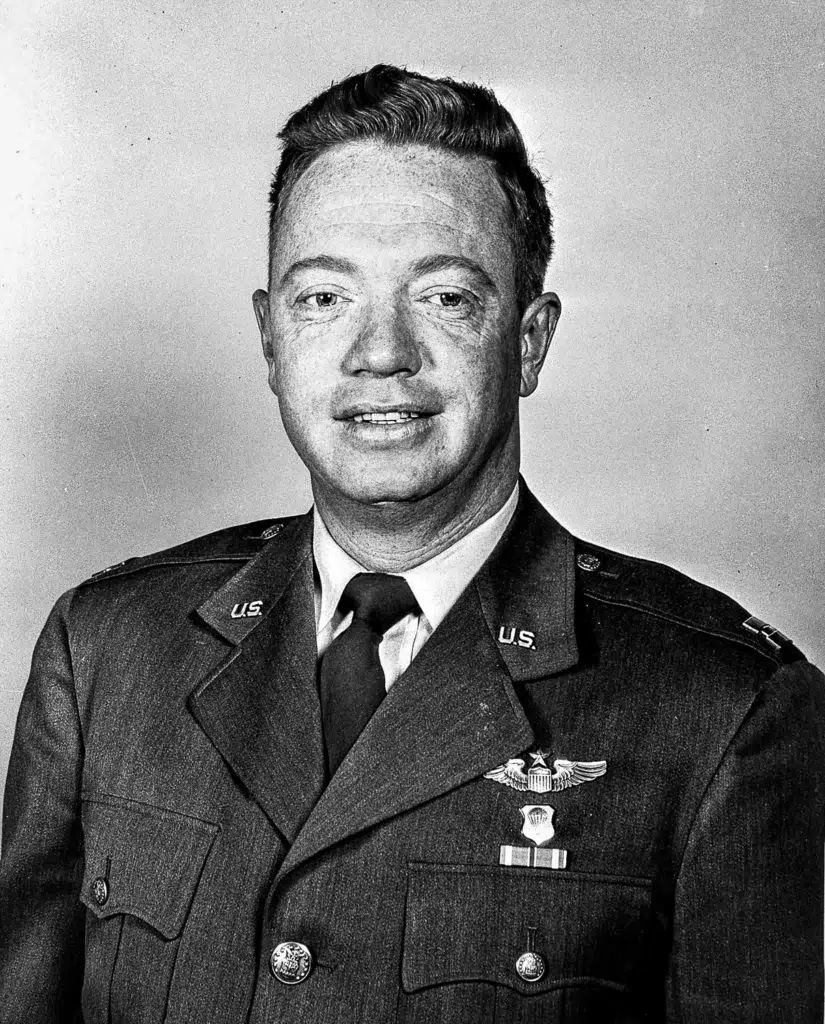
After developing research aircraft that could reach 354,000 feet in altitude, such as the X-15, NASA had to come up with an emergency escape option for pilots in the event that they needed to bail at such heights. The US Air Force launched Project Excelsior in 1959 to determine whether parachutes could be used reliably in those scenarios. Kittinger was to be the guinea pig.
Kittinger conducted his first high-altitude test for the project in November 1959, jumping from a height of 76,400 feet. He barely survived. His gear malfunctioned, and the shroud lines of the small, stabilizing parachute wrapped around his neck. He went into an uncontrollable spin at 22 times the force of gravity. The force was so great that it knocked him unconscious. He was saved only by the automatic deployment of his emergency parachute. Despite nearly dying, Kittinger completed two more jumps for Project Excelsior, including his third and final world-record jump from 102,800 feet.
Related: Delta Force Jump Haters Club: Not all operators like skydiving
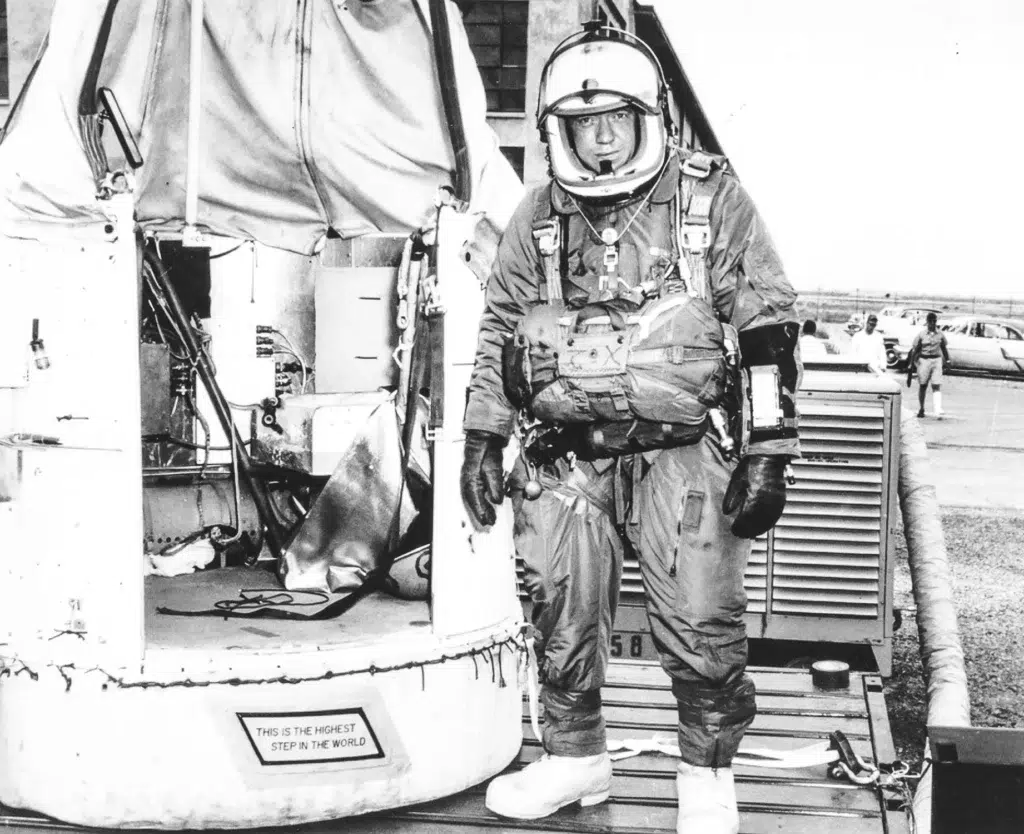
Following the successful completion of Project Excelsior, Kittinger remained in the Air Force and served three tours in the Vietnam War. He flew 483 combat missions between his twin-engine A-26 Invader bomber and the F-4D Phantom II fighter-bomber. In May 1972, he was shot down by the enemy and taken prisoner. He spent 11 brutal months interned at the infamous Hanoi Hilton prisoner of war camp. By the time he finally retired from the Air Force in 1978, he had received numerous commendations, including two Silver Stars and six Distinguished Flying Cross medals.
For more than 60 years, Kittinger held the world record for the highest parachute jump and longest free fall. In 2012, Felix Baumgartner, a former Austrian military parachutist, completed a similar jump from a helium balloon 24 miles above Earth. Kittinger supported the Red Bull stunt as a capsule coordinator, communicating directly with Baumgartner during the event. Two years later, American computer scientist Alan Eustace jumped from an altitude of 25 miles.
Kittinger’s historic skydive can be watched in full in the Boards of Canada music video for Dayvan Cowboy below.
Read more from Sandboxx News
- Ukraine is finally getting ATACMS, the weapon that can change the war
- Debunking the ‘lost F-35’ conspiracy theories
- How to reshape the future of recruiting from America’s former top enlisted Navy official
- The Marine Corps is not struggling with recruiting and this may be due to its unique nature
- Russia’s Black Sea commander alleged dead after strike against fleet’s HQ
